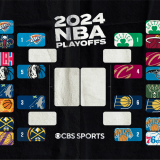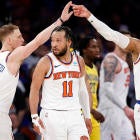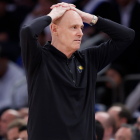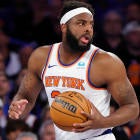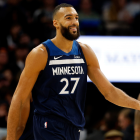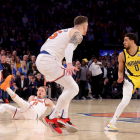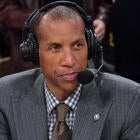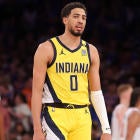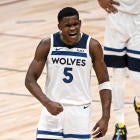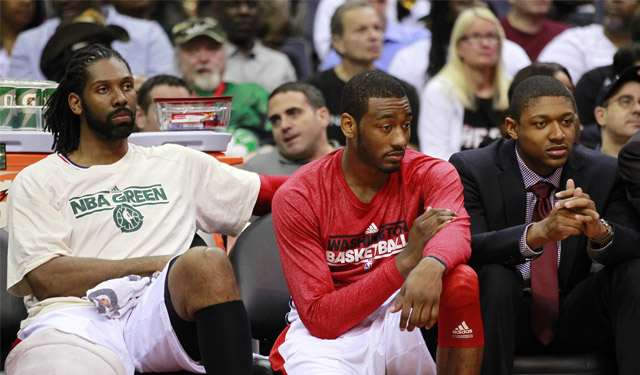
Over the next month, CBSSports.com's Eye On Basketball will take a team-by-team look at 2013 NBA offseason. We continue with the Eastern Conference hopefuls, the Washington Wizards. Check out the rest of the offseason reports here.
How they finished 2013
The Washington Wizards started the 2012-13 season as one of the more pathetic teams we've seen in a while -- offensively, that is. As of January 11, the Wizards were the worst team in basketball with a 5-28 record. The problem wasn't the defense. They were giving up 101.5 points per 100 possessions, which was good for 12th best in the NBA. They could stop teams when they needed to with Emeka Okafor manning the middle and active players on the perimeter.
The problem was they couldn't score, almost to an embarrassing degree. The Wizards were managing 93.1 points per 100 possessions, easily the worst offensive rating in the league behind the Indiana Pacers' 97.8 (29th in the league). To put that into context, only one team over the last 10 seasons has been worse at scoring and that was the 2011-12 Charlotte Bobcats team (92.3) that ended up being the worst team in history (to make them both feel better, the 2002-03 Denver Nuggets put up a pathetic 88.9 points per 100 possessions).
Then something changed on January 12; John Wall returned from injury and galvanized his team like it didn't seem possible. Over the final 49 games of the season, the Wizards managed 101.1 points per 100 possessions, 23rd in the league over that stretch and a far cry from when they were looking historically inept at putting the ball in the basket. The team went 24-25 after Wall's return and looked like they could actually be a playoff team over the course of a full season, if healthy.
Wall was fantastic at driving the offensive attack, the defense was still spectacular (finished eighth in defensive rating for the entire season), and the role players stepped up. Most importantly, rookie shooting guard Bradley Beal found his groove next to John Wall and his teammates, making 46.7 percent from the field and 46.6 percent from downtown over his final 25 games.
Overall, the Wizards finished the season with a disappointing 29-53 season, but they really had two seasons during 2012-13 and I don't mean like how the Lakers kept hitting the reset button every time something was difficult.
Offseason needs
Scoring. Lots and lots of scoring.
Even with the improvement after John Wall's return, the Wizards finished last in the NBA in points per 100 possessions. If we pretend that Wall played the entire season and they performed at the same clip we saw over the final 49 games, their 101.1 offensive rating would still only be tied for 19th in the NBA with the Boston Celtics. None of that is acceptable for a team with a blur for a point guard and a shooting guard who found a deadly shooting stroke over the second half of the season.
The Wizards can best accomplish this by acquiring shooters this offseason. This may sound like an odd solution considering they were actually 10th in the NBA in 3-point percentage and 27th in the NBA in overall field goal percentage, but I believe there's a reason they could use some shooters to open up the scoring. As Mike Prada of Bullets Forever points out in this excellent post on their 3-point shooting, the Wizards were arguably the most proficient 3-point shooting team from the corner and had the biggest discrepancy from corner 3-point shooting to above-the-break 3-point shooting. This means they weren't actually as good at shooting the ball from downtown as their overall percentage looked.
When adjusting for pace, the Wizards ranked 20th in 3-point attempts per game. Why not shoot more if you're such a good shooting team from downtown? The Wizards were also 24th in the league at making shots in the restricted area. Because so many of their shots inside were so unsuccessful compared to the rest of the league, spreading the floor from above-the-break behind the arc and not just from the corners would open up the floor and give their players easier shots inside.
They could also use some depth inside, preferably guys that can finish around the rim.
The draft
The Wizards had the third pick in the draft for the second straight year and ended up selecting Otto Porter to fill out their perimeter of the future. Porter is a bit of a confusing prospect. You'll love a 6'8" small forward with a 7'1" wingspan just about any day. He's drawn comparisons to Tayshaun Prince and I think they're pretty fair, but that's only a good thing for the Wizards if he becomes the defender Prince was in his prime. The confusing thing is he doesn't do a ton all that well on offense and you have no idea if his outside shot is the 42.2 percent on 3.3 attempts per game in sophomore season or the 22.6 percent on 1.6 attempts we saw from him as a freshman.
They also acquired second round pick Glen Rice, Jr. out of the D-League. Rice is exactly the type of shooter you'd want the Wizards to pick up this offseason, even if you're not sure how much he can do outside of that. His stroke is pure.
Free agency and trades
With Trevor Ariza and Emeka Okafor opting in for the final years of their contracts, the Wizards didn't have a ton of flexibility with their cap situation. They went out and re-signed Martell Webster to a four-year deal worth roughly $22 million. Webster shot a career-high 42.2 percent from downtown for the Wizards last season. They also went out and grabbed Eric Maynor to be their backup point guard and Al Harrington to be a potential stretch-4 off the bench. They also re-signed Garrett Temple to be a combo guard off the bench for them.
It wasn't a terribly exciting series of moves, but you can see the reasoning behind most of them.
Overall grade and accomplishments: C+
I'm willing to fluctuate on this grade but I picked a C+ just to hedge somewhere in the middle. With Martell Webster's back history, the lack of a true fifth big man on the roster when Nene and Trevor Booker missed significant time last season, and not knowing whether or not Otto Porter can actually spread the floor the way the Wizards need to, I'm not sure how much the team truly addressed their needs for scoring/outside shooting and another big man to call their own.
However, skepticism isn't damnation here; it's simply waiting to find out more of what the Wizards have acquired this offseason. Maybe they didn't need to do a whole lot. Maybe a healthy John Wall, who now has a max contract extension to prove to be justified, teaming up with a healthy Bradley Beal will be enough offensive punch to keep the ball moving and the defense scrambling. Add a healthy season from Nene and you have more balance in the attack than we saw last year.
If Otto Porter proves he can play on offense the way they need him to, Glen Rice, Jr. proves he can be in the rotation, and Martell Webster can continue his incredible outside shooting from last season, the Wizards might have just enough offense to punch that defense into the playoff race. In 2012, the Wizards decided that hoping for the Oklahoma City Thunder model coming to fruition wasn't for them. They jettisoned JaVale McGee, Andray Blatche, and Nick Young to give veterans for John Wall to work with and hold him accountable on the court.
Since then, they've been looking for the right combination of veteran power with youthful exuberance. Perhaps, this offseason is one step closer to accomplishing that and getting back into the playoffs.







